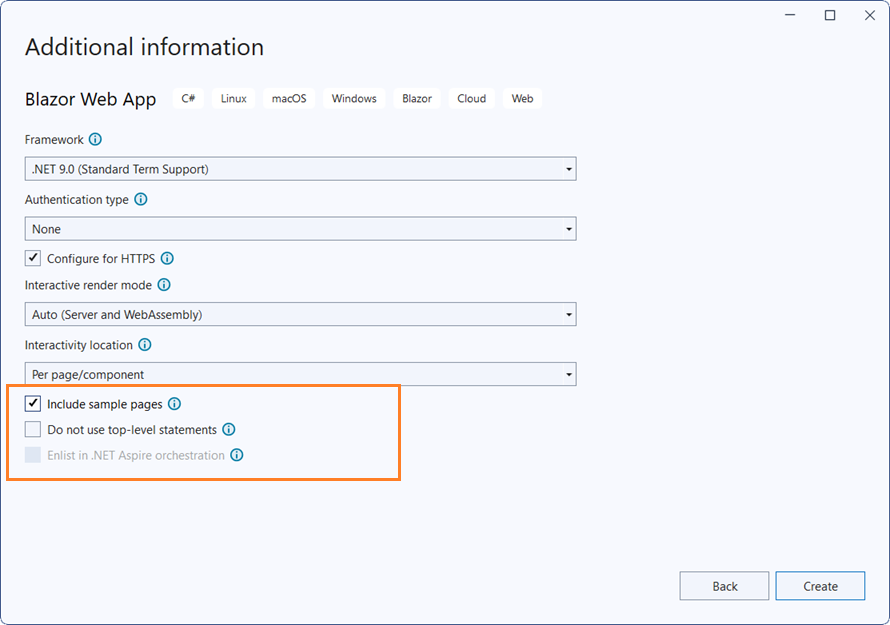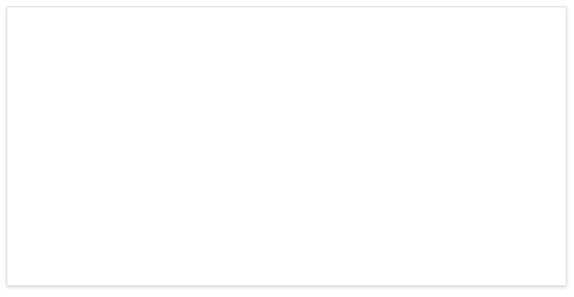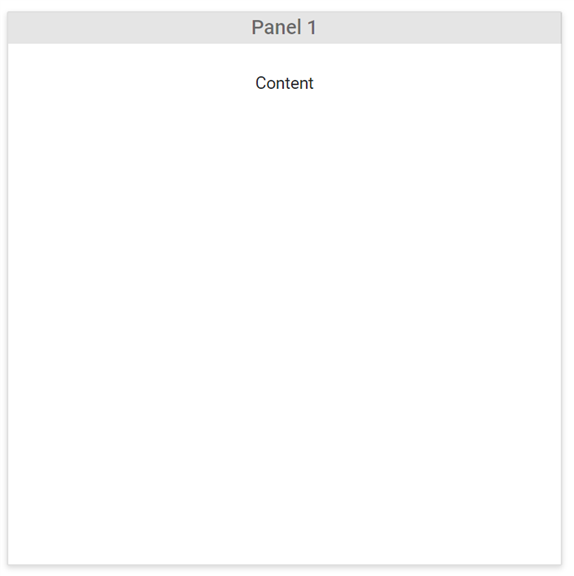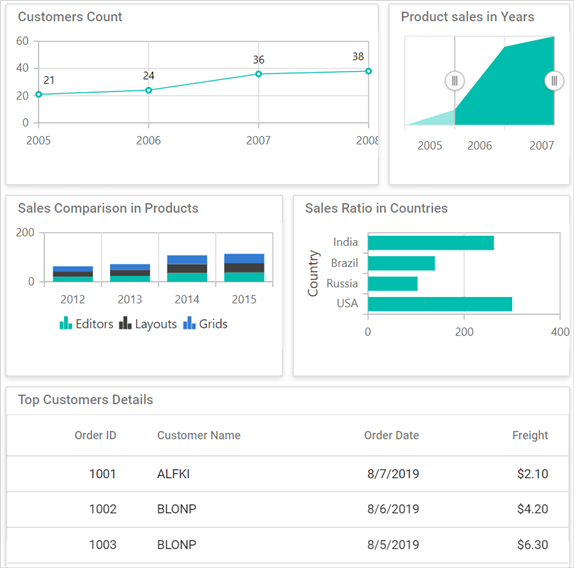Getting Started with Dashboard Layout Component in a Blazor Web App
3 Dec 202524 minutes to read
This section describes how to include the Syncfusion Blazor Dashboard Layout component into a Blazor Web App using Visual Studio, Visual Studio Code, and the .NET CLI.
Prerequisites
Create a New Blazor Web App in Visual Studio
You can create a Blazor Web App using Visual Studio 2022 via Microsoft Templates or the Syncfusion® Blazor Extension.
Configure the appropriate Interactive render mode and Interactivity location while creating a Blazor Web App.

Install Syncfusion® Blazor Layouts and Themes NuGet in the Blazor Web App
To add the Blazor Dashboard Layout component in the app, open the NuGet package manager in Visual Studio (Tools → NuGet Package Manager → Manage NuGet Packages for Solution), then search and install Syncfusion.Blazor.Layouts and Syncfusion.Blazor.Themes.
If using the WebAssembly or Auto render modes in the Blazor Web App, install Syncfusion® Blazor component NuGet packages in the client project.
Alternatively, the Package Manager Console can be used to install the required NuGet package
Install-Package Syncfusion.Blazor.Layouts -Version 31.2.12
Install-Package Syncfusion.Blazor.Themes -Version 31.2.12NOTE
Syncfusion® Blazor components are available in nuget.org. Refer to the NuGet packages topic for the available NuGet packages list with component details.
Prerequisites
Create a New Blazor Web App in Visual Studio Code
You can create a Blazor Web App using Visual Studio Code via Microsoft Templates or the Syncfusion® Blazor Extension.
Configure the appropriate interactive render mode and interactivity location when setting up a Blazor Web App. For detailed information, refer to the interactive render mode documentation.
For example, in a Blazor Web App with the Auto interactive render mode, use the following commands.
dotnet new blazor -o BlazorWebApp -int Auto
cd BlazorWebApp
cd BlazorWebApp.ClientInstall Syncfusion® Blazor Layouts and Themes NuGet in the App
If using the WebAssembly or Auto render modes in the Blazor Web App, install Syncfusion® Blazor component NuGet packages in the client project.
- Press Ctrl+` to open the integrated terminal in Visual Studio Code.
- Ensure you’re in the project root directory where your
.csprojfile is located. - Run the following command to install a Syncfusion.Blazor.Layouts and Syncfusion.Blazor.Themes NuGet package and ensure all dependencies are installed.
dotnet add package Syncfusion.Blazor.Layouts -v 31.2.12
dotnet add package Syncfusion.Blazor.Themes -v 31.2.12
dotnet restoreNOTE
Syncfusion® Blazor components are available in nuget.org. Refer to the NuGet packages topic for the available NuGet packages list with component details.
Prerequisites
Latest version of the .NET SDK. If you previously installed the SDK, you can determine the installed version by executing the following command in a command prompt (Windows) or terminal (macOS) or command shell (Linux).
dotnet --versionCreate a Blazor Web App using .NET CLI
Run the following command to create a new Blazor Web App in a command prompt (Windows) or terminal (macOS) or command shell (Linux).
Configure the appropriate interactive render mode and interactivity location when setting up a Blazor Web Application. For detailed information, refer to the interactive render mode documentation.
For example, in a Blazor Web App with the Auto interactive render mode, use the following commands.
dotnet new blazor -o BlazorWebApp -int Auto
cd BlazorWebApp
cd BlazorWebApp.ClientThis command creates a new Blazor Web App and places it in a new directory called BlazorWebApp inside your current location. See the Create a Blazor App and dotnet new CLI command topics for more details.
Install Syncfusion® Blazor Layouts and Themes NuGet in the App
Here’s an example of how to add the Blazor Dashboard Layout component to the application by using the following commands in a command prompt (Windows), terminal (Linux and macOS), or PowerShell to install the Syncfusion.Blazor.Layouts and Syncfusion.Blazor.Themes NuGet packages. See Install and manage packages using the dotnet CLI for more details.
If using the WebAssembly or Auto render modes in the Blazor Web App, install Syncfusion® Blazor component NuGet packages in the client project.
dotnet add package Syncfusion.Blazor.Layouts --version 31.2.12
dotnet add package Syncfusion.Blazor.Themes --version 31.2.12
dotnet restoreNOTE
Syncfusion® Blazor components are available in nuget.org. Refer to the NuGet packages topic for the available NuGet package list with component details.
Add Import Namespaces
Open the ~/_Imports.razor file in the client project and import the Syncfusion.Blazor and Syncfusion.Blazor.Layouts namespaces.
@using Syncfusion.Blazor
@using Syncfusion.Blazor.LayoutsRegister Syncfusion® Blazor Service
Register the Syncfusion® Blazor Service in the ~/Program.cs file of your Blazor Web App.
If the Interactive Render Mode is set to WebAssembly or Auto, register the Syncfusion® Blazor service in the ~/Program.cs files of the main server project and associated .Client project.
...
...
using Syncfusion.Blazor;
var builder = WebApplication.CreateBuilder(args);
// Add services to the container.
builder.Services.AddRazorComponents()
.AddInteractiveServerComponents()
.AddInteractiveWebAssemblyComponents();
builder.Services.AddSyncfusionBlazor();
var app = builder.Build();
.......
using Syncfusion.Blazor;
var builder = WebAssemblyHostBuilder.CreateDefault(args);
builder.Services.AddSyncfusionBlazor();
await builder.Build().RunAsync();Add Stylesheet and Script Resources
Reference the theme stylesheet within the <head> section and the script reference at the end of the <body> in the ~/Components/App.razor file. These resources are accessed from NuGet via Static Web Assets.
<head>
....
<link href="_content/Syncfusion.Blazor.Themes/bootstrap5.css" rel="stylesheet" />
</head>
....
<body>
....
<script src="_content/Syncfusion.Blazor.Core/scripts/syncfusion-blazor.min.js" type="text/javascript"></script>
</body>NOTE
Check out the Blazor Themes topic to discover various methods (Static Web Assets, CDN, and CRG) for referencing themes in your Blazor application. Also, check out the Adding Script Reference topic to learn different approaches for adding script references in your Blazor application.
Add Syncfusion® Blazor Dashboard Layout Component
Add the Syncfusion® Blazor Dashboard Layout component to a Razor page located under the Pages folder (e.g., Pages/Home.razor) in either the Server or Client project. If an interactivity location as Per page/component in the web app, define a render mode at top of the component, as follows:
| Interactivity location | RenderMode | Code |
|---|---|---|
| Per page/component | Auto | @rendermode InteractiveAuto |
| WebAssembly | @rendermode InteractiveWebAssembly | |
| None | — |
NOTE
If an Interactivity Location is set to
Globaland the Render Mode is set toAutoorWebAssembly, the render mode is configured in theApp.razorfile by default.
@* desired render mode define here *@
@rendermode InteractiveAuto@using Syncfusion.Blazor.Layouts
<SfDashboardLayout>
<DashboardLayoutPanels>
<DashboardLayoutPanel>
</DashboardLayoutPanel>
</DashboardLayoutPanels>
</SfDashboardLayout>- Press Ctrl+F5 (Windows) or ⌘+F5 (macOS) to launch the application. This will render the Syncfusion® Blazor Dashboard Layout component in the default web browser.

Defining Panels
The Dashboard Layout component can be rendered with multiple panels, each designed with basic properties. Each panel typically consists of a header and a content section. These sections are defined using the HeaderTemplate and ContentTemplate properties, respectively.
Panels are interactive, supporting functionalities such as dragging, floating, and resizing.
Panels with Simple Data
A basic Dashboard Layout panel can display simple data. The panel’s header is defined by HeaderTemplate and its content by the ContentTemplate.
@using Syncfusion.Blazor.Layouts
<SfDashboardLayout>
<DashboardLayoutPanels>
<DashboardLayoutPanel>
<HeaderTemplate><div>Panel 1</div></HeaderTemplate>
<ContentTemplate><div>Content</div></ContentTemplate>
</DashboardLayoutPanel>
</DashboardLayoutPanels>
</SfDashboardLayout>
<style>
.e-panel-header {
background-color: rgba(0, 0, 0, .1);
text-align: center;
}
.e-panel-content {
text-align: center;
margin-top: 10px;
}
</style>The Dashboard Layout with simple content will be rendered in the web browser as demonstrated in the following screenshot.

Panels with Components
A Dashboard Layout can also host complex UI components such as charts, grids, maps, or gauges within its panels.
These components are placed as panel content by assigning the corresponding Blazor component element as the ContentTemplate of the panel.
@using Syncfusion.Blazor.Charts
@using Syncfusion.Blazor.Grids
@using Syncfusion.Blazor.Layouts
<div class="content">
<SfDashboardLayout Columns="6" CellSpacing="@(new double[]{10 ,10 })">
<DashboardLayoutPanels>
<DashboardLayoutPanel Id="Panel1" SizeX="4" SizeY="2">
<HeaderTemplate><div class='header'> Customers Count </div></HeaderTemplate>
<ContentTemplate>
<div style="height:100%; width:100%;">
<SfChart ID="linechart" @ref="linechartObj">
<ChartPrimaryXAxis ValueType="Syncfusion.Blazor.Charts.ValueType.DateTime">
</ChartPrimaryXAxis>
<ChartSeriesCollection>
<ChartSeries DataSource="@DataSource" XName="XValue" YName="YValue" Type="ChartSeriesType.Line">
<ChartMarker Visible="true">
<ChartDataLabel Visible="true" Position="Syncfusion.Blazor.Charts.LabelPosition.Top">
</ChartDataLabel>
</ChartMarker>
</ChartSeries>
</ChartSeriesCollection>
</SfChart>
</div>
</ContentTemplate>
</DashboardLayoutPanel>
<DashboardLayoutPanel Id="Panel2" SizeX="2" SizeY="2" Column="4">
<HeaderTemplate><div class='header'> Product sales in Years </div></HeaderTemplate>
<ContentTemplate>
<div style="height:100%; width:100%;">
<SfRangeNavigator ID="range" @ref="rangeObj" Value="@Value" ValueType="Syncfusion.Blazor.Charts.RangeValueType.DateTime" IntervalType="RangeIntervalType.Years" LabelFormat="yyyy">
<RangeNavigatorSeriesCollection>
<RangeNavigatorSeries DataSource="@DataSource" XName="XValue" Type="RangeNavigatorType.Area" YName="YValue"></RangeNavigatorSeries>
</RangeNavigatorSeriesCollection>
</SfRangeNavigator>
</div>
</ContentTemplate>
</DashboardLayoutPanel>
<DashboardLayoutPanel Id="Panel3" SizeX="3" SizeY="2" Row=2 Column=3>
<HeaderTemplate><div class='header'> Sales Ratio in Countries </div></HeaderTemplate>
<ContentTemplate>
<div style="height:100%; width:100%;">
<SfChart ID="chart" @ref="barchartObj">
<ChartPrimaryXAxis Title="Country" EnableTrim="true" ValueType="Syncfusion.Blazor.Charts.ValueType.Category">
<ChartAxisMajorGridLines Width="0"></ChartAxisMajorGridLines>
</ChartPrimaryXAxis>
<ChartSeriesCollection>
<ChartSeries DataSource="@DataSource" XName="X" YName="Y" Type="ChartSeriesType.Bar">
</ChartSeries>
</ChartSeriesCollection>
</SfChart>
</div>
</ContentTemplate>
</DashboardLayoutPanel>
<DashboardLayoutPanel Id="Panel4" SizeX=3 SizeY=2 Row=2 Column=0>
<HeaderTemplate><div class='header'> Sales Comparison in Products </div></HeaderTemplate>
<ContentTemplate>
<div style="height:100%; width:100%;">
<SfChart ID="chart1" @ref="chartObj" Width="100%" Height="100%">
<ChartPrimaryXAxis ValueType="Syncfusion.Blazor.Charts.ValueType.Category"></ChartPrimaryXAxis>
<ChartSeriesCollection>
<ChartSeries DataSource="@DataSource" Name="Editors" XName="X1" YName="YValue" Type="ChartSeriesType.StackingColumn">
</ChartSeries>
<ChartSeries DataSource="@DataSource" Name="Layouts" XName="X1" YName="YValue" Type="ChartSeriesType.StackingColumn">
</ChartSeries>
<ChartSeries DataSource="@DataSource" Name="Grids" XName="X1" YName="YValue" Type="ChartSeriesType.StackingColumn">
</ChartSeries>
</ChartSeriesCollection>
</SfChart>
</div>
</ContentTemplate>
</DashboardLayoutPanel>
<DashboardLayoutPanel Id="Panel5" SizeX=6 SizeY=2 Column=6 Row=4>
<HeaderTemplate><div class='header'> Top Customers Details</div></HeaderTemplate>
<ContentTemplate>
<div style="height:100%; width:100%;">
<SfGrid ID="grid" DataSource="@Orders">
<GridPageSettings></GridPageSettings>
<GridColumns>
<GridColumn Field=@nameof(Order.OrderID) HeaderText="Order ID" TextAlign="Syncfusion.Blazor.Grids.TextAlign.Right" Width="120"></GridColumn>
<GridColumn Field=@nameof(Order.CustomerID) HeaderText="Customer Name" Width="130"></GridColumn>
<GridColumn Field=@nameof(Order.OrderDate) HeaderText=" Order Date" Format="d" Type="ColumnType.Date" TextAlign="Syncfusion.Blazor.Grids.TextAlign.Right" Width="150"></GridColumn>
<GridColumn Field=@nameof(Order.Freight) HeaderText="Freight" Format="C2" TextAlign="Syncfusion.Blazor.Grids.TextAlign.Right" Width="120"></GridColumn>
</GridColumns>
</SfGrid>
</div>
</ContentTemplate>
</DashboardLayoutPanel>
</DashboardLayoutPanels>
</SfDashboardLayout>
</div>
@code
{ SfChart chartObj;
SfChart barchartObj;
SfRangeNavigator rangeObj;
SfChart linechartObj;
private object[] Value = new object[] { new DateTime(2006, 01, 01), new DateTime(2008, 01, 01) };
public class ChartData
{
public DateTime XValue { get; set; }
public double YValue { get; set; }
public string X { get; set; }
public double Y { get; set; }
public string Country { get; set; }
public string X1 { get; set; }
public double Y1 { get; set; }
public double Y2 { get; set; }
public double Y3 { get; set; }
public double Y4 { get; set; }
}
public List<ChartData> DataSource = new List<ChartData>
{
new ChartData { XValue = new DateTime(2005, 01, 01), YValue = 21, X = "USA", Y =300.2, Country = "USA: 72", X1= "2012"},
new ChartData { XValue = new DateTime(2006, 01, 01), YValue = 24, X = "Russia", Y = 103.1, Country = "RUS: 103.1", X1= "2013"},
new ChartData { XValue = new DateTime(2007, 01, 01), YValue = 36, X = "Brazil", Y = 139.1, Country = "BRZ: 139.1", X1= "2014"},
new ChartData { XValue = new DateTime(2008, 01, 01), YValue = 38, X = "India", Y = 262.1, Country = "IND: 262.1", X1= "2015"},
};
public List<Order> Orders { get; set; }
protected override void OnInitialized()
{
Orders = Enumerable.Range(1, 6).Select(x => new Order()
{
OrderID = 1000 + x,
CustomerID = (new string[] { "ALFKI", "ANANTR", "ANTON", "BLONP", "BOLID" })[new Random().Next(5)],
Freight = 2.1 * x,
OrderDate = DateTime.Now.AddDays(-x),
}).ToList();
}
public class Order
{
public int? OrderID { get; set; }
public string CustomerID { get; set; }
public DateTime? OrderDate { get; set; }
public double? Freight { get; set; }
}
protected override async Task OnAfterRenderAsync(bool firstRender)
{
await Task.Delay(3000); // simulate the async operations
this.chartObj.RefreshAsync();
this.linechartObj.RefreshAsync();
this.barchartObj.RefreshAsync();
}
}
<style>
#linechart, #grid, #chart1, #chart, #range {
height: 100% !important;
width: 100% !important;
}
</style>
NOTE
When using the SfRangeNavigator component in this sample, ensure that the Syncfusion.Blazor.RangeNavigator NuGet package is installed in your project. You can install the package from nuget.org.
To get started quickly with designing a Blazor Dashboard Layout with UI Components, you can check the video below.
By default, the Dashboard Layout component is rendered with auto-adjustable and responsive panels according to the parent dimensions.
NOTE